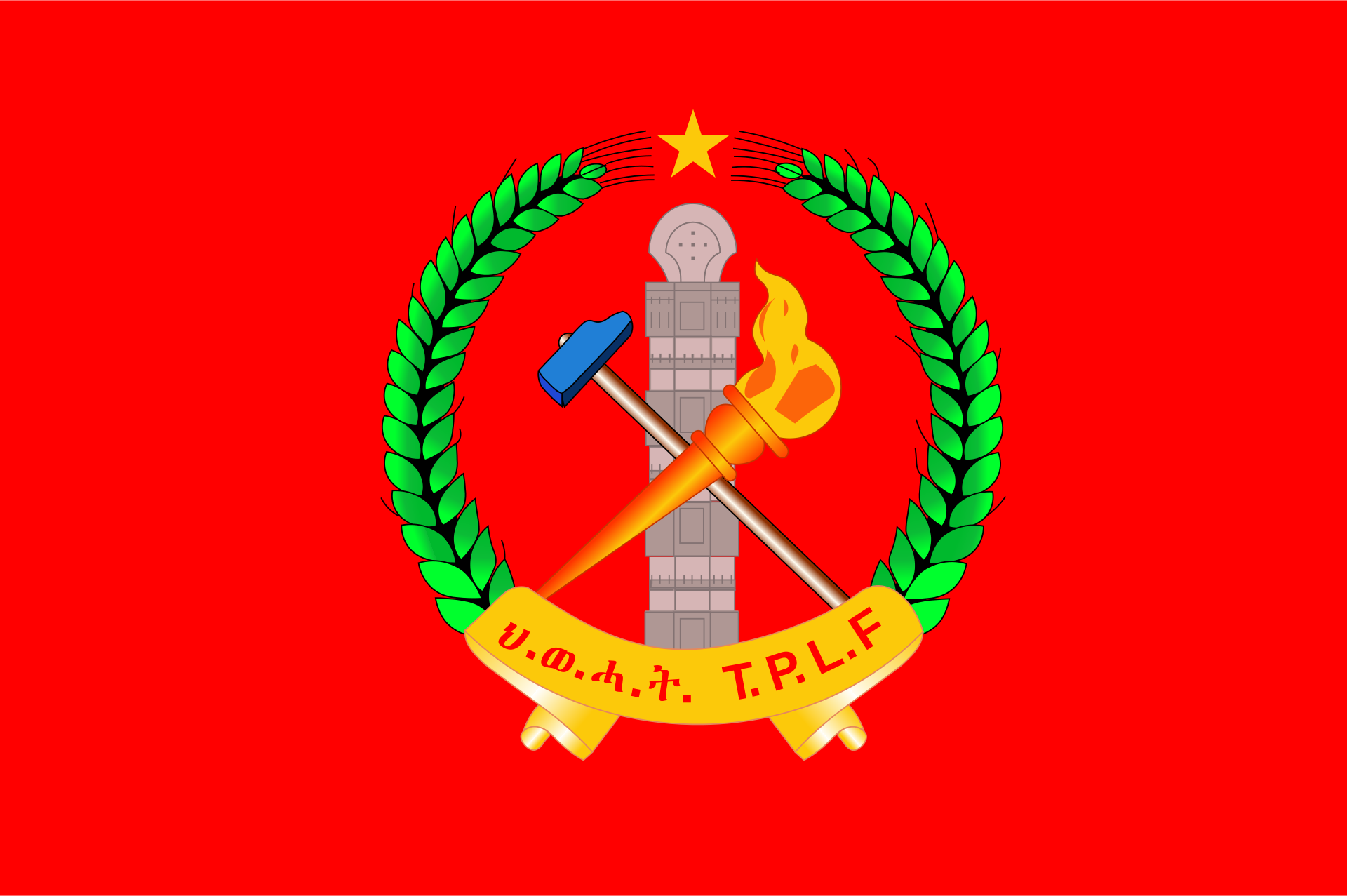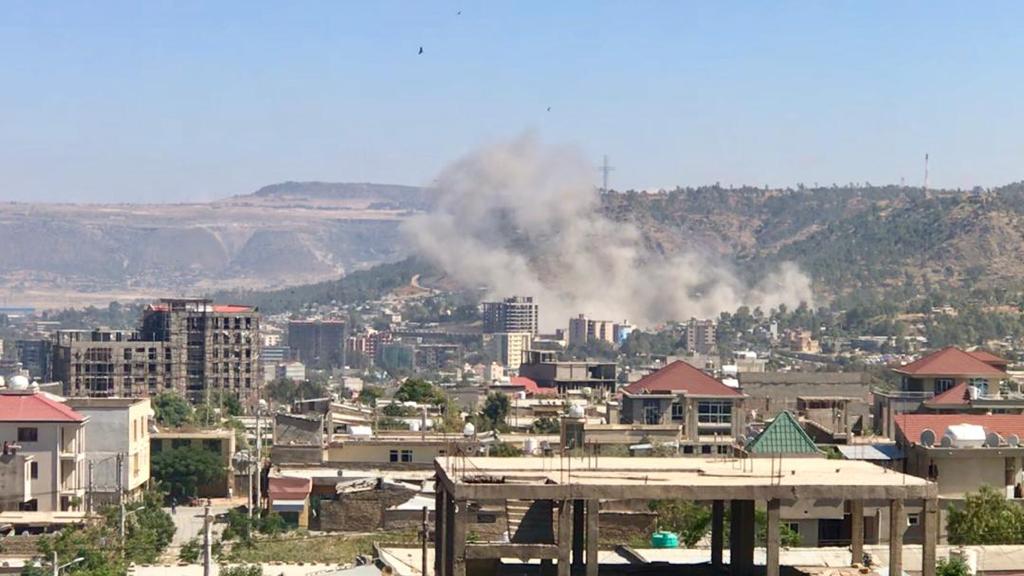The Tigray War is an war in the Tigray National Regional State and neighboring regions that lasted from the 3rd November 2020 to the 3rd November 2022. The war was primarily fought in the Tigray Region of Ethiopia between the Ethiopian federal government and Eritrea on one side, and the Tigray People's Liberation Front (TPLF) on the other.
Historical background and prelude to the war

Tigray People's Liberation Front
Foundation and Civil War
The TPLF was founded in May of 1983 in northern Ethiopia in response to the oppression of ethnic Tigrayans by the various governments of Ethiopia throughout history. The TPLF was founded with aim of the "elimination of national oppression". It also sought the establishment of a "people's democratic state".[1]
EPRDF-rule in Federal Democratic Republic of Ethiopia
Following the Autumn of Nations, the TPLF took control of Ethiopia and became the ruling party of the country for around thirty years. However, the TPLF's government was brought down in 2018.[2]
2018-2020 political crisis
After the TPLF's deposition in 2018, a power struggle began between the TPLF's former government and Abiy Ahmed's new government.[2]
The course of the War
Foreign involvement
State of Eritrea
The State of Eritrea has deployed troops into the Tigray National Regional State, using their military to fight in active combat against the TPLF.[3] While the Eritrean government promised to pull their troops out of Tigray in April of 2021, they have yet to withdraw from the conflict.[4]
United Arab Emirates
The United Arab Emirates has provided military support to the Ethiopian government.[5][6] This has come largely in the form of air support as the Emirates have deployed military planes into the Tigray National Regional State to support the Ethiopian war effort against Tigray.[7]
United States of America
Prior to the war, the United States of America was a firm ally of Ethiopia. Initially, the Trump administration didn't take any action during the conflict when it began in November of 2020. After the Biden administration came to power in January of 2021, the United States began advocating for setting up humanitarian corridors. Despite this, Biden has still refused to condemn the Ethiopian government's war crimes in the conflict.[8] Eritrea has alleged that the United States is supporting the TPLF,[9] however these allegations contradict the actual actions taken by the Biden administration.
Conflicting Interpretations of the War
War crimes

Airstrikes on civilians
See main article: Airstrike
Both Ethiopian and Eritriean forces have engaged in air strikes against civilians in the Tigray National Regional State.[10]
Ethnic cleansing
See main article: Ethnic cleansing
Over the course of the Tigray War, the Ethiopian government under Abiy Ahmed has taken actions of ethnic cleansing against the Tigrayan people, forcing them out of the military regardless of loyalty.[5] Abiy Ahmed has also purged ethnic Tigrayans from the government.[11] In the western parts of the Tigray National Regional State, Ethiopian forces have taken actions of ethnic cleansing against regular civilians.[12] The Ethiopian government has tried to hide evidence of ethnic celansing back blocking telecommunications with Tigray.[13]
Genocide
See main article: Genocide
As the Tigray War has continued to become more brutal since its opening in November of 2020, the Ethiopian government has escalated the war into a genocide of ethnic Tigrayans. As of May of 2022, the genocide has claimed 500,000 victims.[14]
Aftermath of the War
References
- ↑ PEOPLE'S DEMOCRATIC PROGRAMME OF THE TIGRAY PEOPLE'S LIBERATION FRONT (TPLF)
- ↑ 2.0 2.1 The conflict in Ethiopia—who’s fighting who, and why? | Start Here
- ↑ Ethiopian PM confirms Eritrean troops entered Tigray during conflict
- ↑ Eritrea confirms its troops are fighting in Ethiopia’s Tigray
- ↑ 5.0 5.1 Ethiopia's war in Tigray turns into defeat
- ↑ UAE air bridge provides military support to Ethiopia gov’t
- ↑ The UAE Joins The Tigray War: Emirati Wing Loong I UCAVs Deploy To Ethiopia
- ↑ Ethiopia’s War Leads to Ethnic Cleansing in Tigray Region, U.S. Report Says
- ↑ Eritrea blames US support for Tigray’s leaders for the war
- ↑ Ethiopia: Unlawful Shelling of Tigray Urban Areas
- ↑ Ethiopia’s Tigray crisis: Socialism or barbarism
- ↑ Crimes against Humanity and Ethnic Cleansing in Ethiopia’s Western Tigray Zone
- ↑ “Dying by blood or by hunger”: The war in Ethiopia’s Tigray region, explained
- ↑ There’s Genocide in Tigray, but Nobody’s Talking About it